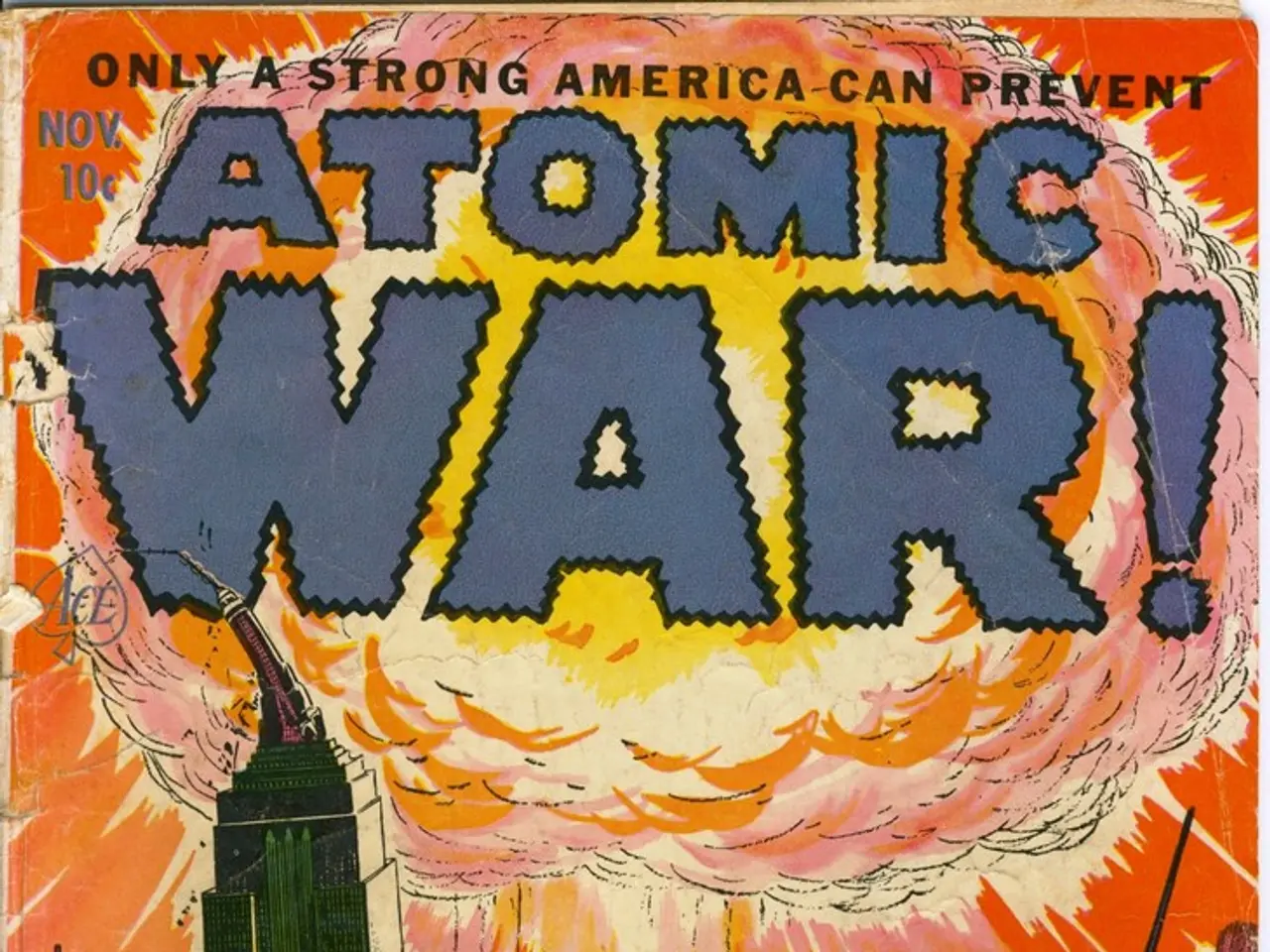Trump posits his image as a shrewd negotiator on his import tax strategy
In a series of landmark trade agreements, US President Donald Trump has established a 15% reciprocal tariff on goods imported from the European Union (EU), Japan, and South Korea. This move replaces previously threatened higher tariffs, such as a 30% tariff with the EU, and marks a significant shift in international trade relations.
The EU, Japan, and South Korea have all agreed to the new tariff rate, avoiding the threat of higher tariffs. In return, these countries have pledged substantial investments and market access commitments.
The EU, for instance, has committed to purchasing $750 billion worth of energy-related goods from the US over three years and investing an additional $600 billion in the US economy. Japan's investment pledges were higher than South Korea's but aligned with the scale of its economy. South Korea agreed to invest about $350 billion, including $150 billion in shipbuilding and $100 billion in LG-related purchases.
The agreements also maintain tariffs at 15% in key sectors such as autos, which could impact automotive imports. South Korea’s shipbuilding and manufacturing sectors are part of the investment pledges, potentially impacting auto supply chains indirectly.
While not detailed explicitly in the disclosed terms, export controls linked to semiconductor supply chains are integral to the broader trade context. The Trump administration's AI action plan suggests tighter controls on semiconductor exports, which implicates U.S.-Japan and U.S.-South Korea supply chains.
These trade deals serve as strategic moves to strengthen economic relations and secure supply chains among US allies. They can be seen as part of a broader policy to counterbalance China by reinforcing ties with key partners and controlling technology exports, specifically in semiconductors.
Analysts believe Trump is not backing down this time on tariffs, with Josh Lipsky, an international economics expert at the Atlantic Council think tank, stating that Trump is following through on his tariff promises, if not exceeding them. Trump's ability to conclude deals, often without crucial detail, is an integral part of his political signature.
However, the details of these agreements remain vague, leaving open questions about exemptions, key sectors such as autos, pharmaceuticals, and semiconductors, and the future of China. The tariffs were initially scheduled to begin on Friday, but were moved to Thursday.
Every trade deal announced by Trump is celebrated by his supporters as a demonstration of his negotiating skills. Yet, the latest employment figures show the effects of Trump’s protectionist offensive, with US job creation in May and June revised sharply downward to levels not seen since the COVID-19 pandemic.
Despite comments about his trade policy reversals, Trump has hardly budged from his trade strategy, which could prove politically painful. His frequent backtracking on trade deadlines has led to the creation of the mocking acronym "TACO" ("Trump always chickens out").
Leaders of countries are avoiding going into detailed agreements to present deals in the most positive or least negative light to their public. The tariffs, initially announced for Thursday, were met with mixed reactions, with some economists predicting a "massive shift" while others expect only minor impacts.
As the dust settles on these trade agreements, it remains to be seen how they will impact the global economy and the US's relations with its key trade partners. The White House has remained tight-lipped about the details of the agreements, fuelling speculation and uncertainty. One thing is clear, though: these agreements mark a significant shift in international trade relations under President Trump's administration.
- The policy-and-legislation enacted by President Trump's administration, which includes the establishment of a 15% reciprocal tariff on goods imported from the EU, Japan, and South Korea, has become a key aspect of his politics and general news, significantly impacting international trade relations.
- The new tariff rate agreed upon by the EU, Japan, and South Korea is not limited to the automotive sector, as tariffs remain at 15% in key sectors such as autos, but also involves substantial investments and market access commitments, particularly in areas like energy, shipbuilding, and semiconductors, as part of a broader policy to strengthen economic relations, secure supply chains, and counterbalance China.








